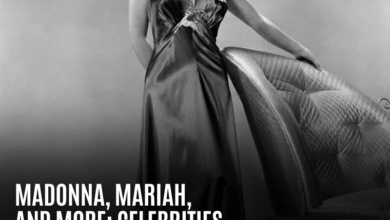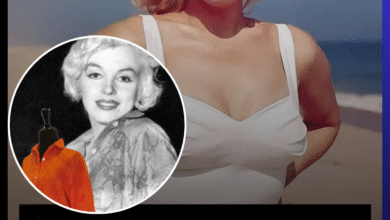Ana de Armas Opens Up About the Darkest Moment of Playing Marilyn Monroe in ‘Blonde’
OPINION: This article may contain commentary which reflects the author's opinion.
Ana de Armas’ portrayal of Marilyn Monroe in the 2022 Netflix film Blonde was a monumental and deeply challenging role for the actress. The film, which takes a fictionalized look at Monroe’s tumultuous life, required de Armas to navigate both emotional and technical hurdles. While the role garnered her critical acclaim and an Oscar nomination for Best Actress, it was no easy feat. De Armas recently shared her experiences and the difficulties she faced while preparing for and filming the role.
Emotional Weight of Playing Marilyn Monroe
One of the most significant challenges for de Armas was the emotional toll of playing Monroe, a figure whose public life as a glamorous star often clashed with her private struggles. In an interview with Variety, de Armas explained that she felt “deeply sad, heavy, and helpless” while portraying Monroe, especially given the tragic trajectory of her life. The emotional weight of Monroe’s story added complexity to de Armas’ performance, with the actress constantly reflecting on what the character might have been thinking and feeling in every scene.
De Armas revealed that her own insecurities mirrored those of Monroe’s, making the role all the more personal. “I don’t think Norma Jeane felt, ever, that she could live up to Marilyn,” she said in an interview with Backstage. This connection to Monroe’s own sense of self-doubt made it even more challenging for de Armas, particularly during the early stages of filming, such as her first time speaking in character with a long dialogue scene opposite Julianne Nicholson. De Armas recalled feeling terrified, especially after spending several hours working on Monroe’s dialect with a coach.
The duality of Monroe’s personas, the public Marilyn Monroe and the private, vulnerable Norma Jeane, was another emotional hurdle. In an interview with Indulge Magazine, de Armas explained the difficulty of capturing the emotional nuance required to embody both aspects of Monroe. “It was about understanding where she was at emotionally every time,” de Armas said, emphasizing the need to dive deep into Monroe’s struggles, trauma, and vulnerabilities.
The most emotionally intense scene for de Armas was filming Monroe’s death scene, which was shot in the exact room where Monroe passed away in 1962. In a USA Today interview, de Armas described the final shot of Monroe’s lifeless feet as lasting “an uncomfortable amount of time,” underlining the theme of Monroe’s emotional unraveling and the haunting nature of her fame and isolation.
Technical Difficulties: Transformation and Mastery
Beyond the emotional challenges, de Armas faced several technical hurdles in transforming into the iconic Marilyn Monroe. The physical transformation was extensive, requiring up to three hours daily for hair and makeup. As reported by Netflix Tudum, de Armas underwent several procedures to match Monroe’s ever-evolving look. This included contouring, wearing multiple wigs, and even bleaching and shaving her eyebrows. The actress was required to sport around 100 different looks to reflect Monroe’s changing styles throughout her career, which demanded immense dedication and attention to detail from the makeup team.
The eyebrow transformation was particularly tough for de Armas, who recalled crying when she saw the drastic change for the first time. “I had to completely minimize my naturally dark brows, which was a huge adjustment,” she explained. The meticulous process involved over 150 hours to create custom wigs that mirrored Monroe’s signature look, including the iconic “poof” hairstyle.
Another key challenge for de Armas was mastering Monroe’s voice and accent. The actress dedicated nine months to working with a dialect coach, even continuing the rigorous practice during the production of Knives Out. “Someone’s voice is more than just a specific accent,” she said in an interview with The LA Times. “It says so much more about a person.” Despite her tireless efforts, de Armas’ portrayal of Monroe’s voice faced some criticism, with some viewers detecting a hint of her Cuban-Spanish accent. However, Monroe’s estate defended de Armas, stating that she captured Monroe’s essence, even if the accent was not a perfect match.
Cultural and Critical Reception
While de Armas received widespread acclaim for her portrayal of Monroe, Blonde itself generated significant controversy, particularly for its NC-17 rating due to explicit content, including depictions of sexual violence. This added complexity to the actress’ experience, as she was forced to navigate not only the challenges of portraying a beloved icon but also the ethical implications of such graphic material.
Despite these challenges, de Armas’ performance in Blonde showcased her versatility and depth as an actress, earning her praise and accolades. The role marked a turning point in her career, showcasing her ability to take on difficult, emotionally complex roles. Her transformation into Marilyn Monroe is a testament to her dedication to the craft and her understanding of the profound impact Monroe’s legacy continues to have on the world.
Conclusion
Ana de Armas’ portrayal of Marilyn Monroe in Blonde was both a technical and emotional feat, requiring the actress to delve deep into the complexities of Monroe’s life while undergoing a significant physical transformation. The difficulties de Armas faced—ranging from mastering Monroe’s voice and appearance to confronting the emotional weight of her tragic story—highlight the challenges of playing such a complex and iconic figure. In the end, de Armas’ performance was a deeply empathetic and nuanced portrayal, shedding light on both the public and private struggles of one of Hollywood’s most enduring icons.



